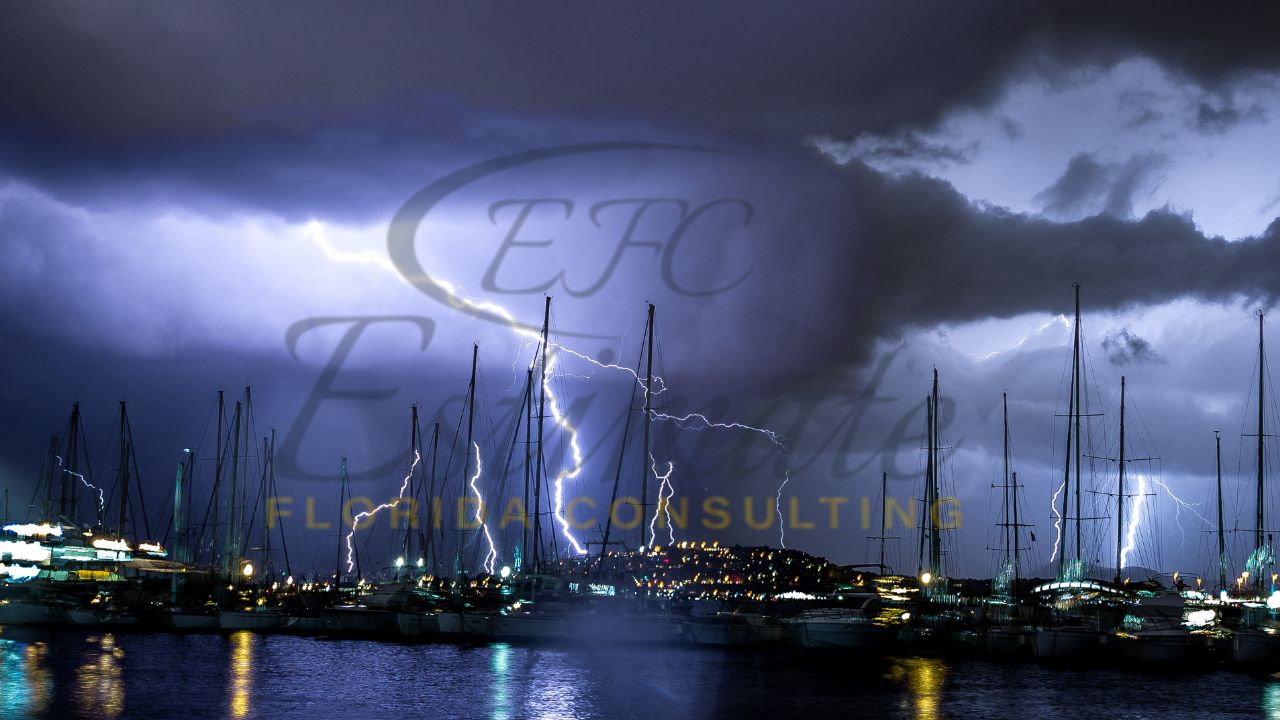Hurricane-Resistant Docks and Marinas: Lessons from Coastal Engineering
Introduction In today’s construction industry, especially within coastal infrastructure development, adapting to climate realities has become non-negotiable. With hurricanes becoming more frequent and destructive, coastal engineers, marina developers, and construction project planners are under pressure to design waterfront infrastructure that can withstand increasingly extreme weather events. Category 4 hurricanes (130-156 mph) and Category 5 storms (157+ mph) have already caused billions of dollars in damage across Florida, the Gulf Coast, and the Caribbean. For those working in these hurricane-prone zones, resilient and sustainable construction is now an essential consideration.

This article explores how aluminum floating docks have emerged as a powerful solution in sustainable construction. With insights from real-world case studies and best engineering practices, this construction contributing writer presents practical lessons on how aluminum dock systems can reduce lifecycle costs, minimize storm damage, and support long-term performance. If you are a builder, marina operator, or construction estimator seeking to submit your article or pitch a resilient infrastructure solution, the strategies covered here are essential.
Aluminum began seeing widespread use in engineering during the early 20th century, particularly after World War II, as production became more efficient and demand increased. The critical breakthrough, however, came in 1886 with the invention of the Hall-Heroult electrolytic process, which made large-scale aluminum production economically viable. This process, though energy-intensive, became cost-effective when paired with hydroelectric power in the early 1900s. While the price per pound of aluminum remains higher than steel, its superior corrosion resistance, lighter weight, and structural performance make it a valuable material in marine construction today.
A floating dock made from aluminum weighs about 45% less than a comparable steel structure and up to 85% less than concrete. These weight advantages translate directly into easier transport, lower stress on moorings, and quicker installation, particularly in modular construction settings. This shift to lightweight, modular materials supports both sustainable building goals and hurricane-resilient construction standards.
The Challenge:
Hurricanes and Coastal Infrastructure Extreme wind, storm surges, waves, and flying debris all place tremendous stress on coastal structures. Traditional dock systems made of wood, concrete, or untreated steel often fail under such conditions. The consequences include:
- Uplift and lateral force-related structural failures
- Rapid corrosion from saltwater exposure
- Destruction of anchoring or piling systems
- Slow recovery due to inflexible or non-modular systems
Floating concrete docks, while strong, become destructive debris if they detach, damaging adjacent structures and vessels. This is especially problematic in marinas with high-value yachts (often valued between $3 million and $20 million) that are becoming increasingly common.
Construction professionals must prioritize materials that not only resist corrosion and breakage but also adapt flexibly to dynamic weather loads. Enter aluminum.
Why Aluminum Floating Docks?
- Corrosion Resistance Marine-grade aluminum forms a protective oxide layer that resists corrosion from saltwater and chemicals. This significantly reduces long-term maintenance and eliminates the need for painting or sealing.
- Lightweight, High Strength-to-Weight Ratio Aluminum docks impose less stress on piles and anchoring systems, easing construction and transport logistics while maintaining structural integrity.
- Lower Maintenance Requirements Unlike wood, aluminum won’t rot or warp. It doesn’t require chemical treatments, which also makes it an eco-friendlier option.
- Engineering Flexibility (Extrudability) Aluminum’s extrudability means engineers can create custom dock profiles that include built-in T-slots for accessories like cleats, ladders, bollards, and lighting—streamlining construction and configuration.
- Elastic Modulus Advantage Aluminum’s low elastic modulus allows it to flex under stress without permanent deformation. One real-world example: an aluminum flatbed trailer once badly twisted in a roadside accident was reported to return to its original shape when towed—demonstrating aluminum’s ability to deform and recover.
- Sustainability and Recyclability Aluminum is 100% recyclable and aligns with green construction principles. When produced using hydroelectric power, it has a significantly lower environmental footprint than steel or concrete.
- Modular Design Preassembled aluminum dock modules are ideal for construction projects requiring fast recovery and easy future upgrades. Damaged sections can be swapped out, reducing downtime.
Real-World Applications and Case Studies
Case Study 1: Post-Irma Marina Rebuilds in the Caribbean Hurricane Irma in 2017 destroyed multiple marinas in the Caribbean. Many chose to rebuild using modular aluminum floating docks designed by MAADI Group, a Canadian engineering firm. These docks were designed with marine-grade extrusions and pile anchoring. The results: installations that flex with wave action, resist corrosion, and are quickly redeployed.
Case Study 2: Florida Marina Upgrades Gulf Coast marinas are increasingly replacing fixed wooden docks with aluminum floating docks. These modern marina systems incorporate flotation modules encased in durable polyethylene shells, filled with closed-cell expanded polystyrene (EPS) foam meeting the minimum density requirements of ASTM C578 for Type VIII or higher. They are anchored using pile-guided systems equipped with integrated damping components to absorb lateral loads, and feature adjustable cleats and bollards mounted on aluminum extrusions with integrated heavy-duty T-slot tracks—providing enhanced storm resilience while improving both aesthetic appeal and operational flexibility.
Engineering Best Practices for Construction Estimators and Builders
To maximize resilience, aluminum floating docks must be properly engineered for hurricane conditions. Consider the following:
Anchoring Systems:
- Utilize pile guides that are pre-engineered with internal damping mechanisms—such as Teflon™ sliding inserts combined with elastomeric dampers—to absorb and dissipate lateral shock forces generated during storm surges and wave action.
- Avoid chain or cable mooring systems in hurricane-exposed environments, as they provide insufficient lateral resistance and are highly susceptible to failure under dynamic loading conditions.
- Always specify heavy-duty pile guide assemblies featuring reinforced structural framing and integrated adjustment mechanisms. These allow for precise lateral alignment and straightforward repositioning to accommodate varying dock configurations and pile placements.
Floatation and Freeboard:
- Use floats with 1.5 lb/cu ft foam-filled cores to ensure positive buoyancy even if punctured.
- Design buoyancy to support loads of 30-40 psf depending on use case.
- Maintain appropriate freeboard: 4”-8” for rowing docks, 20-28” for general use.
Connection Systems:
- Reinforced flexible rubber connectors should provide at least 30 kips of tensile strength.
- All bolts and fasteners should be 300-series marine-grade stainless steel.
- Incorporate rollers and roller deck plates where gangways land on docks.
Wave Attenuation:
- Install floating breakwaters in exposed locations to absorb wave energy.
- Dual-barrier improve design that reflects and dissipates wave energy.
- Use perforated panels or flexible connections to reduce peak pressures.
A prime example of resilient coastal infrastructure can be found at Safe Harbor Old Port Cove marina in Florida, where aluminum have been operating continuously since 2007. Designed and engineered by the MAADI Group nearly two decades ago, these structures have consistently withstood storm conditions, including wind speeds reaching 74 mph and wave heights of up to 6 feet, without incurring significant structural damage. Optimized for high-performance coastal protection, the system is capable of attenuating up to 70% of incident wave energy from 3-foot waves during normal conditions, while still delivering effective dampening performance during more severe storm surges.
Environmental Considerations and Sustainable Construction
Conventional breakwaters—such as stone revetments or concrete barriers—can significantly disrupt marine ecosystems by altering tidal flows, impeding natural water circulation, and damaging habitats. In contrast, aluminum floating breakwaters maintain water permeability, prevent ecological stagnation, and do not leach harmful substances into the environment. Constructed from recyclable materials and often manufactured using low-carbon hydroelectric processes, aluminum systems align well with LEED certification criteria and broader sustainable building objectives.
Lifecycle and Economic Advantages
Although aluminum docks may involve higher initial capital investment compared to traditional materials, their long-term value is compelling. With a typical service life of 25 to 40 years—depending on environmental exposure and maintenance—aluminum structures require minimal upkeep and exhibit excellent durability. This results in a reduced total cost of ownership, making them an economically and environmentally sound choice for marina developers and infrastructure planners. For construction cost estimators and infrastructure developers, aluminum docks present a compelling value proposition: fewer repairs, shorter downtime, and strong alignment with sustainable construction goals.
Key Takeaways for Construction Professionals
- Climate-resilient infrastructure requires advanced materials and smarter design.
- Aluminum floating docks offer strength, flexibility, and corrosion resistance.
- Modular systems simplify maintenance and accelerate post-storm recovery.
- Anchoring, floatation, and wave attenuation must be engineered to site-specific needs.
- Sustainability goals are supported through recyclability and low emissions.
Relevant Internal Resources To explore related construction planning services and cost estimating resources, see:
- Estimate Florida Consulting: Construction Cost Estimating Services
- Estimate Florida Blog: Construction Trends and Techniques
Conclusion As hurricanes grow in intensity, the need for smarter, more resilient marina infrastructure is clear. Aluminum floating docks offer superior strength, modularity, and corrosion resistance—making them a standout choice for builders and project managers working in hurricane zones. Their ability to flex without breaking, resist saltwater corrosion, and facilitate rapid post-storm recovery makes them ideal for the future of coastal construction.
This construction article encourages all professionals engaged in marina development, coastal architecture, and sustainable infrastructure to explore aluminum as a next-generation building material.
Learn more about hurricane-resistant aluminum dock systems
About the Author Alex de la Chevrotiere, P.Eng., IWE, is CEO of MAADI Group — a Canadian firm specializing in aluminum marine structures and bridge systems. With nearly 30 years of engineering and fabrication & shipbuilding experience, Alex advocates for sustainable and climate-resilient waterfront development.

